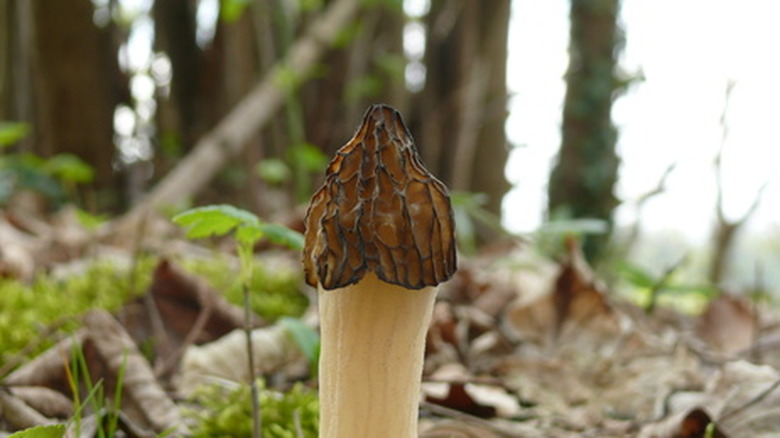How To Hunt For Morel Mushrooms In Illinois
Before you begin your hunt for morel mushrooms in Illinois, familiarize yourself with their appearance because there's a mildly poisonous morel lookalike. If you are just starting out foraging for morels, consider joining a club or going along with someone who knows all about mushrooms and where to hunt for them in Illinois. If you ever have any doubt when selecting mushrooms for consumption, it's best to leave them be.
Morel Hunting Season
Morel Hunting Season
When apple orchards bloom and oak leaves grow bigger, the season to hunt for morels has arrived. Morel mushrooms begin to appear during spring's warming days in southern to central Illinois and about two weeks later in northern Illinois. Five species of morel mushrooms – the edible morels include the black, white and yellow morels – grow in the state. Black morels emerge first from the end of March through early April with yellow and white morels springing up one to two weeks later, overlapping the black morel growing season. The foraging season is over by the first two weeks in May in southern to central Illinois, but it continues for about two additional weeks in the northern part of the state. Morel foraging season lasts about four weeks in total for each mushroom type.
Identify the Cap
Identify the Cap
Morel mushrooms have distinctive conical, fluted and pitted caps. Morel caps range in color from nut brown to black and look like a walnut husk with deep pits and folds. The cap extends far down the mushroom shaft as opposed to the half-free morel – a mushroom that is toxic to many – whose cap is smaller and doesn't cover the shaft. Another mushroom, the false morel, does not have a conical cap and looks more like brown folded parchment growing between the blanket of leaves.
Where to Look
Where to Look
The best place to look for morels in Illinois is along the edge of forested areas where you find oak, elm, aspen and ash trees growing. In the early spring as the ground heats up, look for morels on slopes that face south in the open areas. As spring continues its warming trend, hunt for them along north-facing slopes deeper into wooded areas. Morel mushrooms prefer moist areas where a canopy of trees have left a deep layer of shed leaves.
Morel Hunting Tips
Morel Hunting Tips
In the beginning of spring, morel mushrooms are not large; the cap is between the size of an acorn and small walnut husk. At first, it may take a while to find them peeking out from beneath the leaf-layered forest floor. As spring progresses, morels grow above the forest detritus, which makes them easier to spot. Dead and fallen trees make good hunting ground for morels, as decaying organic matter from the dead trees provide an excellent food source for the mushrooms.
Cite This Article
MLA
Brenner, Laurie. "How To Hunt For Morel Mushrooms In Illinois" sciencing.com, https://www.sciencing.com/hunt-morel-mushrooms-illinois-6300907/. 22 November 2019.
APA
Brenner, Laurie. (2019, November 22). How To Hunt For Morel Mushrooms In Illinois. sciencing.com. Retrieved from https://www.sciencing.com/hunt-morel-mushrooms-illinois-6300907/
Chicago
Brenner, Laurie. How To Hunt For Morel Mushrooms In Illinois last modified March 24, 2022. https://www.sciencing.com/hunt-morel-mushrooms-illinois-6300907/
